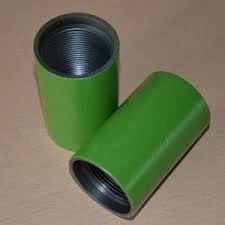- Afrikaans
- Albanian
- Amharic
- Arabic
- Armenian
- Azerbaijani
- Basque
- Belarusian
- Bengali
- Bosnian
- Bulgarian
- Catalan
- Cebuano
- Corsican
- Croatian
- Czech
- Danish
- Dutch
- English
- Esperanto
- Estonian
- Finnish
- French
- Frisian
- Galician
- Georgian
- German
- Greek
- Gujarati
- Haitian Creole
- hausa
- hawaiian
- Hebrew
- Hindi
- Miao
- Hungarian
- Icelandic
- igbo
- Indonesian
- irish
- Italian
- Japanese
- Javanese
- Kannada
- kazakh
- Khmer
- Rwandese
- Korean
- Kurdish
- Kyrgyz
- Lao
- Latin
- Latvian
- Lithuanian
- Luxembourgish
- Macedonian
- Malgashi
- Malay
- Malayalam
- Maltese
- Maori
- Marathi
- Mongolian
- Myanmar
- Nepali
- Norwegian
- Norwegian
- Occitan
- Pashto
- Persian
- Polish
- Portuguese
- Punjabi
- Romanian
- Russian
- Samoan
- Scottish Gaelic
- Serbian
- Sesotho
- Shona
- Sindhi
- Sinhala
- Slovak
- Slovenian
- Somali
- Spanish
- Sundanese
- Swahili
- Swedish
- Tagalog
- Tajik
- Tamil
- Tatar
- Telugu
- Thai
- Turkish
- Turkmen
- Ukrainian
- Urdu
- Uighur
- Uzbek
- Vietnamese
- Welsh
- Bantu
- Yiddish
- Yoruba
- Zulu
petroleum tubing coupling
Understanding Petroleum Tubing Coupling A Critical Component in Oil and Gas Operations
In the oil and gas industry, the efficient transportation of hydrocarbons from the wellbore to the surface is paramount. One of the crucial components in this process is the petroleum tubing coupling. These couplings play an essential role in connecting segments of tubing, ensuring that the flow of oil or gas remains unimpeded while maintaining integrity under various pressures and temperatures. This article delves into the significance, types, and manufacturing standards of petroleum tubing couplings.
What is Petroleum Tubing Coupling?
Petroleum tubing couplings are mechanical devices used to join two lengths of tubing in oil and gas pipelines. They are designed to withstand the high pressures and corrosive environments often found in subsurface drilling operations. Typically made from high-strength steel alloys, these couplings provide the necessary strength and durability to ensure reliable connections in demanding conditions.
Importance of Couplings
The integrity of the entire tubing string is heavily reliant on the couplings. A failure in a coupling can lead to catastrophic results, including leaks, ruptures, or complete system failures, which can not only result in the loss of hydrocarbons but also pose significant risks to safety and the environment. Thus, ensuring that couplings are manufactured to the highest standards and correctly installed is crucial.
Types of Petroleum Tubing Couplings
There are several types of petroleum tubing couplings, each designed for specific applications and conditions. Some common types include
1. Crossover Couplings These are used when different sizes of tubing need to be joined. They allow for a smooth transition between two tubing sizes, ensuring continued flow without disruption.
2. Short Couplings Typically used in situations where space is limited, short couplings provide a more compact connection between adjacent tubing sections.
3. Long Couplings These offer a more substantial joint, providing extra strength and stability—ideal for high-pressure applications.
petroleum tubing coupling

4. Specialized Couplings These couplings may incorporate additional features such as thread-locking mechanisms or additional seals to enhance their performance under specific conditions, such as corrosive environments.
Manufacturing Standards
The manufacturing process of petroleum tubing couplings adheres to rigorous industry standards to ensure their safety and effectiveness. Organizations such as the American Petroleum Institute (API) provide guidelines for the manufacturing, testing, and quality control processes of these components.
The couplings are typically subjected to a series of tests, including tensile strength tests, corrosion resistance tests, and pressure tests, to ensure they meet the required specifications. The materials used must also conform to specific API grades, depending on the operational environment and anticipated stresses.
Installation and Maintenance
Proper installation of petroleum tubing couplings is crucial to their performance. Installers must ensure that the threads are clean, the couplings are adequately lubricated, and the torque specifications are adhered to during the assembly process. Moreover, regular inspections are necessary to detect any signs of wear, corrosion, or misalignment, which can compromise the integrity of the coupling over time.
Future Innovations
As the oil and gas industry evolves, so does the technology behind petroleum tubing couplings. Advances in materials science may lead to the development of lightweight and even more durable couplings that can withstand higher pressures and harsh environments. Additionally, smart coupling technology, which allows for real-time monitoring of structural integrity and environmental conditions, is on the horizon.
Conclusion
Petroleum tubing couplings are indispensable in the oil and gas sector, serving as the link between sections of tubing in high-pressure, potentially hazardous environments. Their importance cannot be overstated, as they directly contribute to the safety, efficiency, and reliability of hydrocarbon transportation. As technology progresses, the evolution of these essential components will play a pivotal role in shaping the future of oil and gas operations, ensuring that they meet increasing demands while adhering to safety and environmental standards. Understanding and investing in high-quality tubing couplings is a key takeaway for stakeholders in the industry, emphasizing their role in successful petroleum extraction and transportation.
-
Tubing Pup Joints: Essential Components for Oil and Gas OperationsNewsJul.10,2025
-
Pup Joints: Essential Components for Reliable Drilling OperationsNewsJul.10,2025
-
Pipe Couplings: Connecting Your World EfficientlyNewsJul.10,2025
-
Mastering Oilfield Operations with Quality Tubing and CasingNewsJul.10,2025
-
High-Quality Casing Couplings for Every NeedNewsJul.10,2025
-
Boost Your Drilling Efficiency with Premium Crossover Tools & Seating NipplesNewsJul.10,2025







